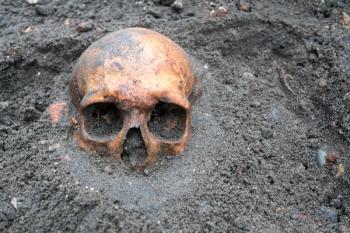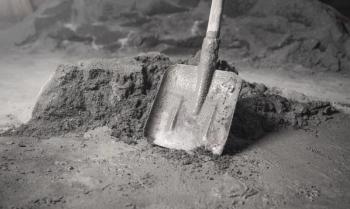
Using Back-Reflection-Enhanced Laser-Induced Breakdown Spectroscopy (BRELIBS) for the Elemental Analysis of Transparent Materials
Mohamed Abdel-Harith of Cairo University and his team explored using BRELIBS for the elemental analysis of the synagogue’s glass shards. Their findings reveal the potential of BRELIBS in conducting elemental analysis on transparent materials. Spectroscopy recently spoke to Abdel-Harith about this work.
Laser-induced breakdown spectroscopy (LIBS) has many advantages, but it generally suffers from lower detection sensitivity compared to other elemental spectroscopy techniques. Recently, a straightforward method, using metallic reflectors, has been explored to improve LIBS sensitivity. This new method, called back-reflection-enhanced LIBS (BRELIBS), was applied in the analysis of pink and green archaeological glass shards from the Eliyahu Hanavi synagogue in Alexandria, Egypt one of the only remaining synagogues in the city proper. Mohamed Abdel Harith of Cairo University and his team explored using BRELIBS for the elemental analysis of the synagogue’s glass shards. Their findings reveal the potential of BRELIBS in conducting elemental analysis on transparent materials. Spectroscopy recently spoke to Abdel-Harith about this work.
Your study deployed a novel approach called back-reflection-enhanced laser-induced breakdown spectroscopy (BRELIBS) (1). How does BRELIBS differ from LIBS, and how was this technique found to be the best one to use for the research you were doing?
BRELIBS is a double-pulse LIBS, where the reflected laser pulse is the second pulse delayed by a brief time interval. The time interval depends on the thickness of the transparent target. This BRELIBS approach has improved the analytical sensitivity of the LIBS technique, as demonstrated by the obtained results.
Please describe the BRELIBS setup that your study used. Above the translational stage, you employed two reflectors, one copper and one silver. Did it surprise you that the polished copper reflector gave improved signal-to-noise (S/N) compared to the polished silver reflector?
A highly polished metallic reflector (copper or silver) was placed in direct contact with the rear surface of the glass target. The reflectors forced the transmitted laser pulse to pass back through the plasma plume produced initially onto the front surface of the target. The reflected laser beam reheated the plasma plume, which increased its light intensity. Hence, the obtained LIBS spectrum resulted in a significant increase in the S/N compared to the spectrum obtained without a reflector.
Because of the lower boiling point of silver compared to copper, the craters induced by the laser on the silver reflectors were found to be deeper than those on the copper. Therefore, contrary to the copper reflector’s case, the diffused and scattered reflection from the melted silver reduced the irradiance that should pass tightly collimated through the plasma plume after passing back through the glass sample.
In your study, the same archaeological glass shards were analyzed using scanning electron microscopy (SEM), and you and your team also utilized energy dispersive X-ray spectroscopy (EDXRF) to validate the calibration-free (CF)-BRELIBS results. What concentration differences did you observe for the various techniques and how did you draw the conclusion that (CF)-BRELIBS results are equivalent to those of the other methods?
A pronounced agreement was obtained between the CF-BRELIBS quantitative analytical results and the EDX results. Furthermore, the validation of the results obtained via CF-LIBS using the standard EDX technique confirms that CF-BRELIBS is a reliable method and is equivalent to other methods.
Numerous studies in the past have conducted elemental analysis of transparent materials such as glass. What is unique about your study and what advantage is demonstrated by the application of (CF)-BRELIBS?
The present study combines the advantages of the standard LIBS, including the simplicity of the technique, how fast it is, how quasi-nondestructive it is, how it requires no sample preparation, and its cost-effectiveness, with enhancing the analytical sensitivity obtained by adopting the back-reflected laser pulse. In addition, these properties give the BRELIBS approach superiority over the other spectroanalytical methods used for the elemental analysis of transparent materials.
What specific challenges did you and your team face while conducting this study?
The main challenge was quantifying the analytical results. This obstacle was overcome by utilizing the calibration-free LIBS (CF-LIBS) technique. Then, the results were validated via the EDX method.
What are your next steps in this work? How do you think your findings will impact the elemental analysis of transparent materials going forward?
In continuation of this work, a comprehensive experimental study has been ongoing in our laboratory recently that has been optimizing different parameters affecting the BRELIBS enhancement of analytical sensitivity using different transparent materials. The laser light wavelength, the focusing specifications, and the target thickness, among others, are some of the experimental parameters that have been optimized. As a result, the BRELIBS approach will open the door to analyzing many transparent materials at higher detection sensitivities, especially for trace elements. Moreover, quantitative measurements will be available adopting CF-BRELIB as has been done in the published work.
Reference
(1) M. Abdel-Harith, A. Elhassan, Z. Abdel-Salam, and M.F. Ali, Anal. Chimica Acta 1184, 339024 (2021).
Mohamed Abdel-Harith is a professor of Laser Physics at the National Institute of Laser Enhanced Science (NILES) at Cairo University, in Cairo, Egypt. He is the senior author of 146 papers and two book chapters in applied laser spectroscopy. He has a particular interest in laser-induced breakdown spectroscopy (LIBS) and laser-induced fluorescence (LIF). In addition, he and his coworkers have joint scientific research with researchers in Italy, Germany, the United States, and South Africa. Direct correspondence to:
Newsletter
Get essential updates on the latest spectroscopy technologies, regulatory standards, and best practices—subscribe today to Spectroscopy.



